Tree Project Update
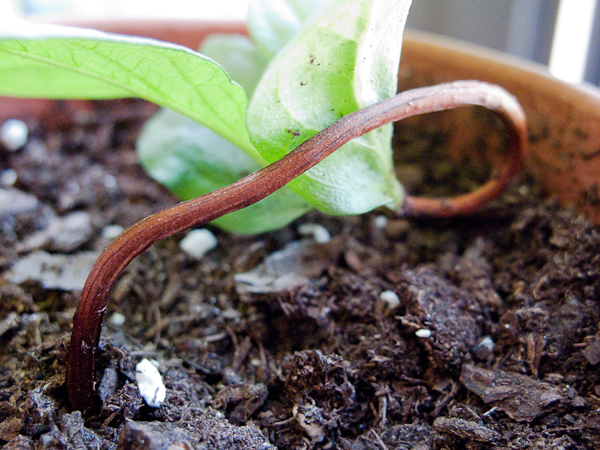
The persimmon sprout in my window is starting to unravel a long woody structure that has, until now, been curled and hidden beneath the leaves.
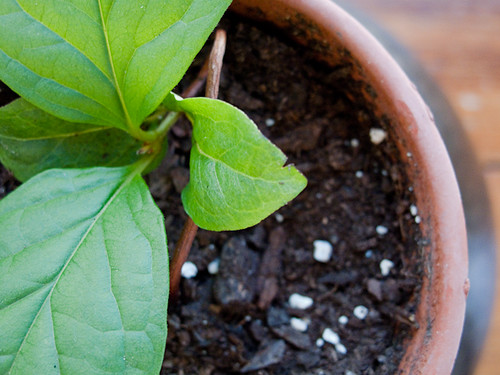
For quite a while I haven't understood this twisty structure, why it had no leaves, why it was so convoluted, but now its purpose is emerging: I think it's going to be the trunk of the persimmon tree. Even though the sprout barely reaches above the tiny terracotta lip, I can see a tree taking shape.
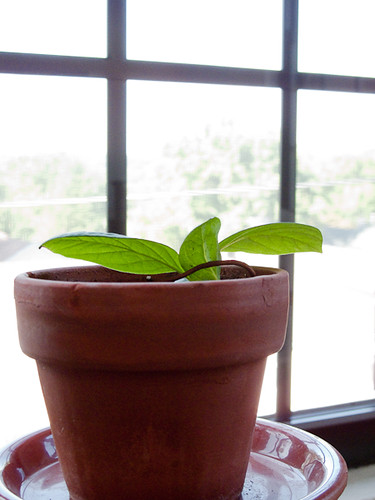
If you've been following Hiroshi Sunairi's Tree Project, either on his site or via my multiple posts about it (catch up by clicking the key word label "tree project"), then you'll applaud this development with me. If you're not up to speed yet, please take a look at Hiroshi's site to learn about this amazing, fun, and highly interactive project.
My own involvement has brought me forward and taken me backward: I'm stretching my concept of the uses and possibilities of photography and, at the same time, connecting deeply with my first memories of pictures.
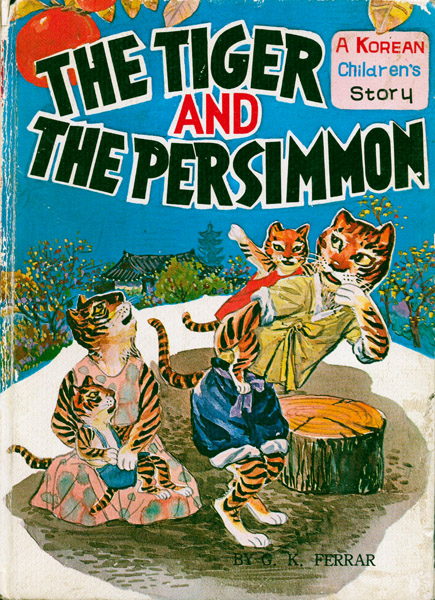
The Tiger and the Persimmon is an ancient Korean folktale; it comes back to me from my childhood in South Korea. The pictures and text of this version are rooted at the core of my consciousness -- I vividly remember reading this book, and learning to wonder about knowing and the mysteries of not-knowing. Picking up Hiroshi's persimmon seed brought it immediately to mind, though I hadn't actually seen the book itself for years, because it had been buried in a box labeled "Sean's childhood stuff" and shoved in the storeroom. Then, unexpectedly last spring, we moved to Staten Island (as you know!), and the turmoil of packing and unpacking unearthed the book itself. At the beginning the connection between the book and Hiroshi's project was quite simplistic (via the word "persimmon"), but as the project continues to unfold I'm noticing deeper, more complicated, resonances.

The story goes like this:
A tiger leaves his mountainside den to find food for his family, but can't find anything suitable and, in general, has an exhausting and miserable time. He's about to give up - his feet are killing him! - but fears returning home empty-handed, disappointing his wife and kids.
Then he stumbles on a quiet village and sees children playing and laughing in the square. Obviously, a nice resolution for the tiger; not so nice, I guess, for the kids. But before the tiger can act, lunch is called and the kids disappear indoors. Disappointed and weary, the tiger slouches under a nearby porch to wait.
From inside the house he hears a small child crying. (Traditional Korean houses have very thin walls and paper windows, so sound carries easily.) The mother tries to quiet the child by saying that a vicious dog is outside and will eat him if he doesn't stop crying. The child keeps crying. The tiger looks nervously around for the vicious dog but doesn't see it, and nevertheless is quite impressed with the child's courage - not afraid of a vicious dog?
The mother then tells the child that a snake is coming. The tiger is further confused - he can't see a snake - and impressed.
And then the mother tells the child that a tiger is outside waiting for him. Hearing this, the tiger is relieved and happy -- because he can see himself, obviously -- and he's willing to oblige the mother. But as gets ready to burst in to the house and grab the child, the mother tries one last tactic:
This time the mother sounded desperate. "Oh, Chol Soo, stop that crying! There's a persimmon!" It was just as though someone had turned off the radio. All the crying, shrieking, and screaming stopped. Everything was as quiet as a Korean village is likely to be fright after lunch.
Sure enough, that gets the tiger's attention. And he's terrified.
"Yipes!" thought the tiger. "What a fierce beast a persimmon must be! I'd better get away from here and fast too. If a fierce dog, or a snake, or a hungry tiger can't frighten that child but a persimmon can make him keep quiet, then a persimmon must be the very fiercest of all beasts."
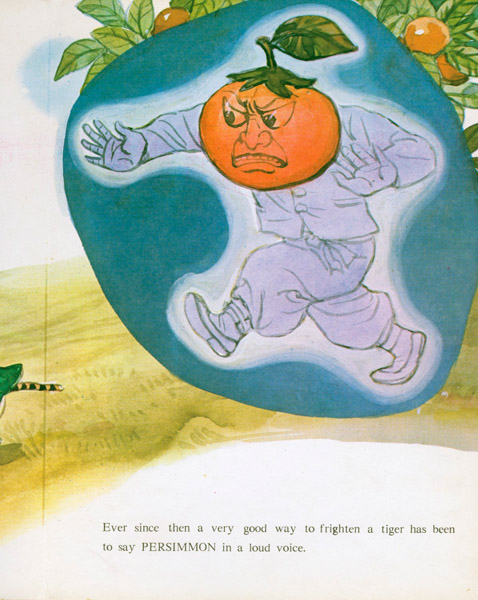
Ha! I'm laughing again as I'm typing this!
The convoluted knowns and unknowns of this story must have tickled my seven-year-old brain a million times, and still fascinate me today. Discovering -- or "recognizing" might be the better word -- these deep structural connections between my work as an adult and memories from childhood is surprising, fun, and deeply satisfying: moments of authentic integration are hard to come by.
And that it came together because of an invitation to plant a seed! Hilarious! What a loopy backspin this whole thing has turned out to be. My thanks, again, to Hiroshi for the opportunity.
Words of wisdom:
A very good way to frighten a tiger is to say PERSIMMON in a very loud voice.
I'd forgotten that part. But, you just never know when it might come in handy.
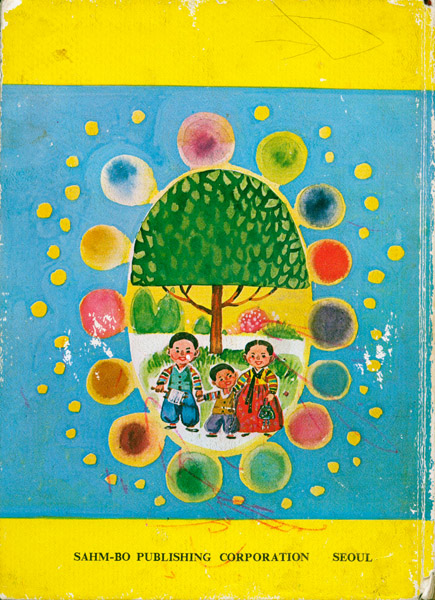
You can get an updated pdf version of the story (without pictures) here, and a quick Google of the title brings up this wonderfully illustrated new version by Janie Jaehyun Park. My childhood copy is a retelling by G.K. Ferrar, illustrated by Kim Young-Ju, published in 1968 by the Sahm-Bo Publishing Corp in Seoul.
Comments